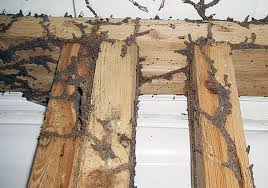How to Identify &
Get Rid of Termites
Pre-Construction Termite Treatment Procedure (Anti-Termite Treatment – Soil Treatment) is a preventive chemical treatment carried out before the construction of a building to protect it from future termite infestations. This treatment creates a chemical barrier that prevents termites from attacking the structure.

IDENTIFY
What do Termite look like ?
Pre-Construction Termite Treatment Procedure (Anti-Termite Treatment – Soil Treatment) is a preventive chemical treatment carried out before the construction of a building to protect it from future termite infestations. This treatment creates a chemical barrier that prevents termites from attacking the structure.
Here’s the step-by-step Procedure as per IS 6313 (Part II) – Code of Practice for Anti-Termite Measures in Buildings:
Inspection – Identify termite entry points and infestation zones.
Drilling – Drill holes along walls, floors, and junctions at regular intervals (usually 12mm wide, 30–50cm apart).
Chemical Injection – Inject termiticide solution into the drilled holes under pressure to reach the soil.
Trench Treatment – Treat soil around the foundation by digging trenches and applying chemicals.
Wood Treatment – Apply termiticide to infested or vulnerable wooden structures.
Sealing – Seal all treated holes and surfaces to complete the treatment.

Pest Treatment
How AIPM Team Works?
✅ Certified, trained technicians
✅ Safety gear and chemical-handling protocols
✅ Real-time treatment updates with before-after images
✅ Service completion report + digital invoice
✅ Post-service guidance and Customer feedback
FAQ
Frequently asked questions.
Before laying the foundation
During plinth filling
Before flooring
Each stage requires precise application for complete protection.
Yes. We use approved termiticides that are safe when handled professionally. Our team ensures the chemicals are applied according to safety standards outlined in IS 6313 Part I.
The protection typically lasts 5 to 10 years, depending on soil conditions, construction type, and quality of application. Regular inspections are still recommended.
Excavated pits and trenches
Basement and plinth area
Junctions of walls and floors
Soil under the flooring
Backfilled earth around the foundation
This ensures full perimeter and sub-structure protection.
.
The duration depends on the size of the site, but typically it takes 1–3 days across different construction stages. We coordinate with your construction team to apply treatment at the correct times.
Eliminate pests and prevent future problems.
- +91 9607171409
